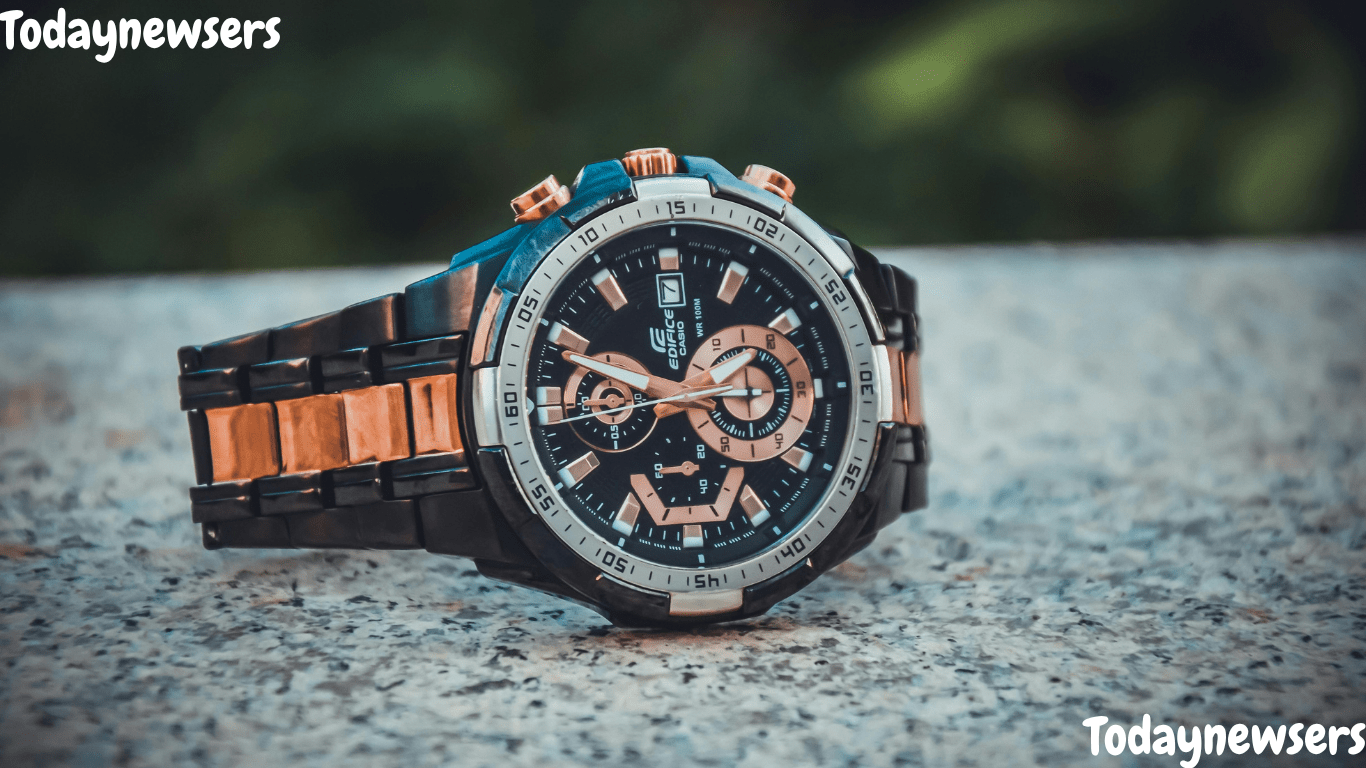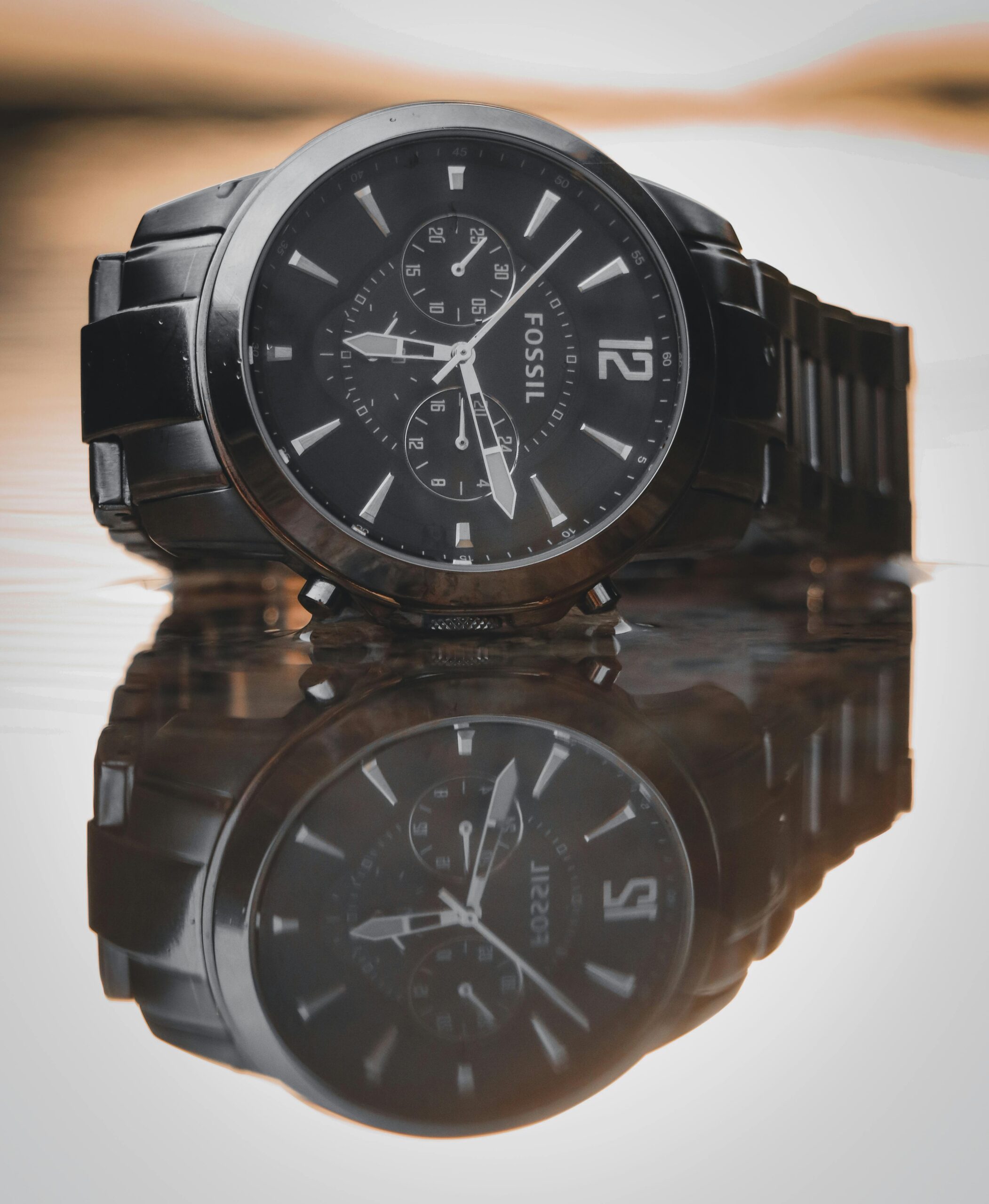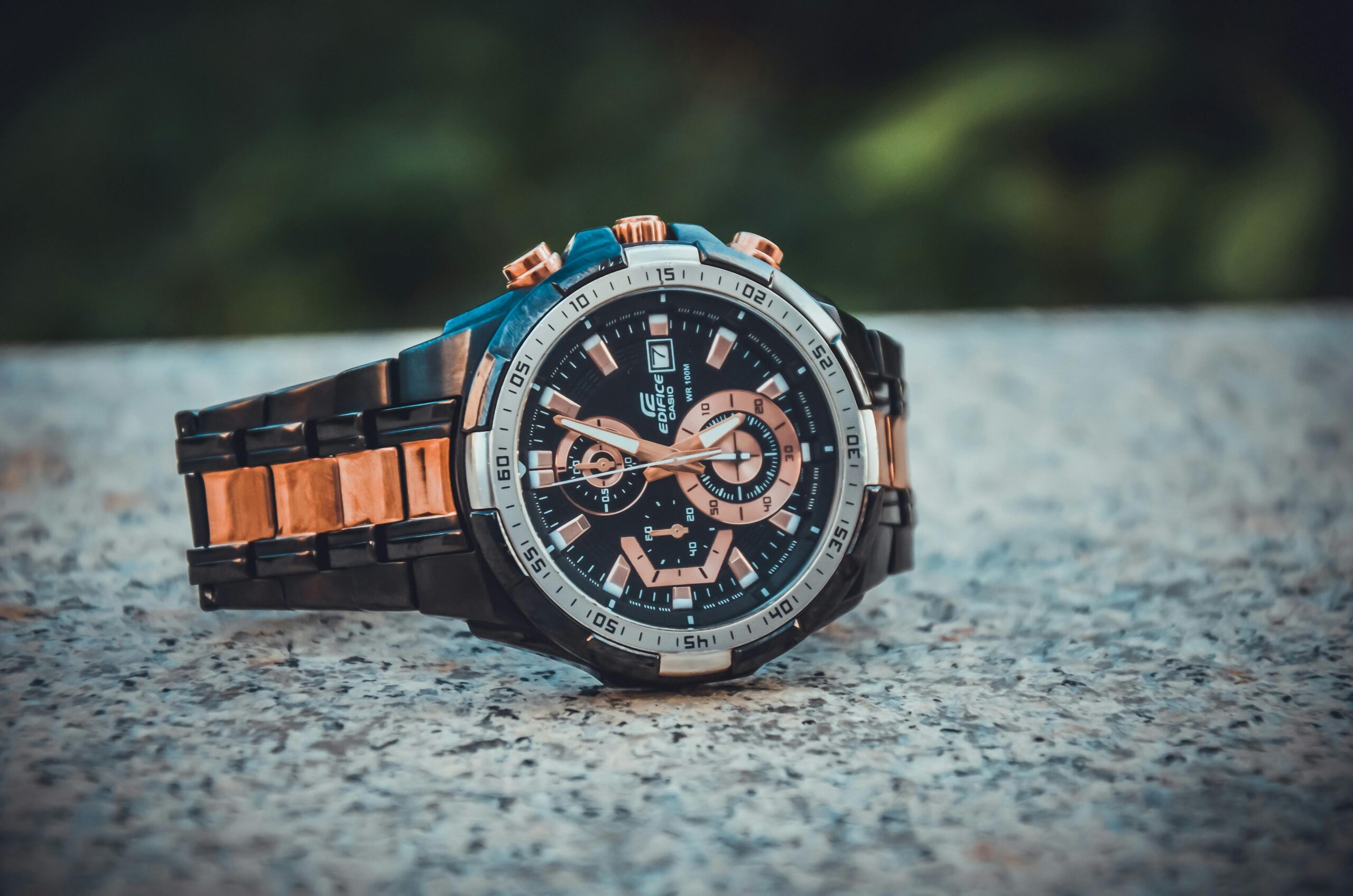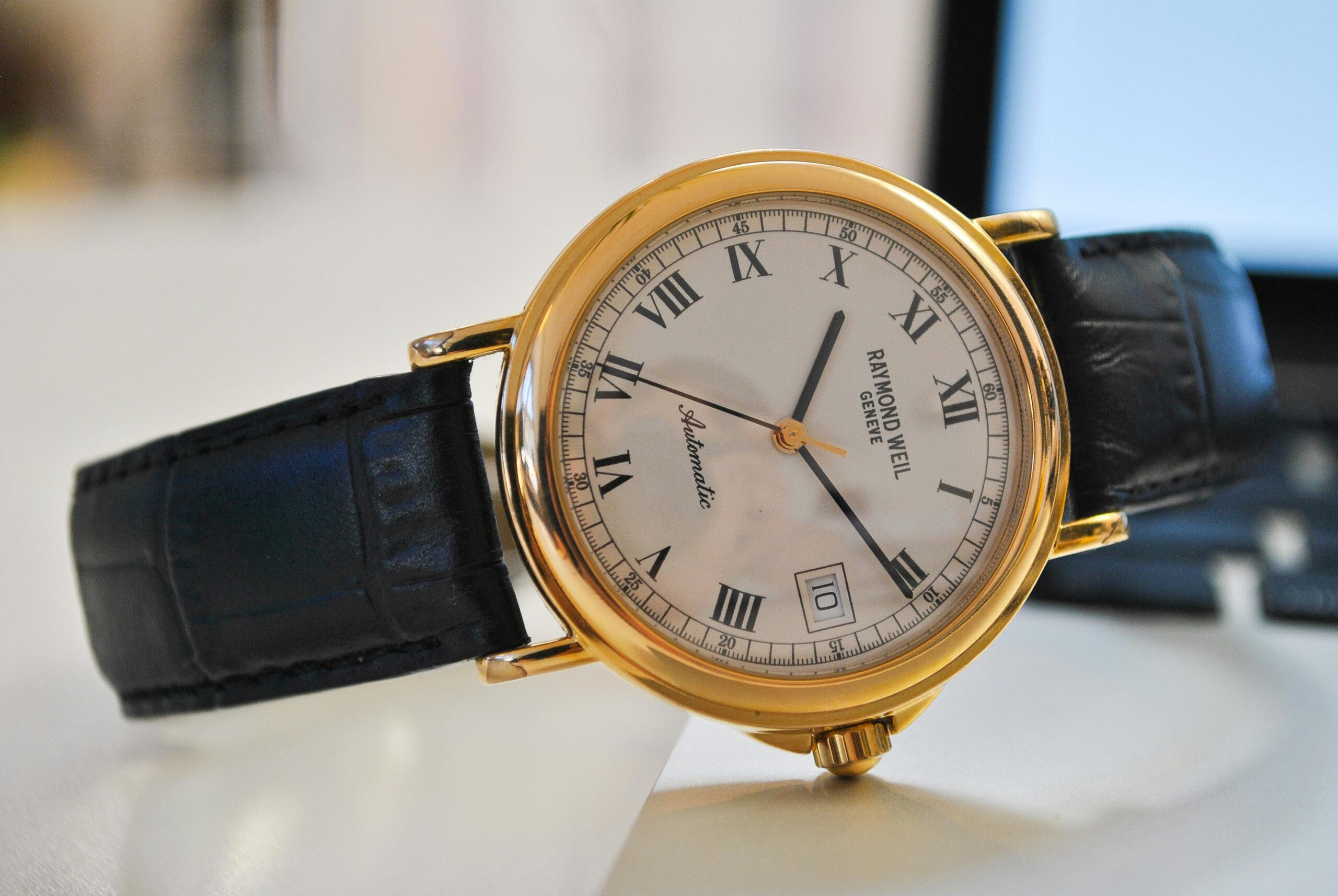Summary
Watches are more than just timekeeping devices—they are statements of style, engineering marvels, and reflections of personal identity. The world of watches is vast and fascinating, from the precision of mechanical movements to the sleek minimalism of smartwatches.
This blog explores the essence of watches, their key features, and why they remain an enduring symbol of sophistication. This guide provides insights into what truly distinguishes watches, whether you’re a horology enthusiast or a first-time buyer. Introduction
There’s something undeniably captivating about a finely crafted watch. It’s not just about telling time—it’s about heritage, artistry, and the silent confidence that comes with wearing a piece of engineering excellence on your wrist. Unlike smartphones that buzz with notifications, a watch is a quiet companion, a blend of form and function that transcends generations.
Watch history; it is a journey through human creativity. Timekeeping has advanced significantly, moving from pocket watches with sundials to ultrathin automatic movements and AI-powered smartwatches. However, traditional watches are still cherished for their craftsmanship and timeless appeal despite the digital age.
We’ll talk about what makes watches so special, their most important features, and why they continue to be an essential fashion and function accessory in this blog. What Is a Watch?
A watch is fundamentally a wrist-worn, portable timekeeping instrument. But that definition barely scratches the surface. A watch is a miniature representation of engineering, design, and art. Depending on the type, it can be powered by intricate gears, quartz crystals, or even solar energy.
Watches of all kinds Mechanical watches use a complicated system of gears and springs. They can be either automatic (self-winding through motion) or manual (requiring winding). Quartz watches, which are controlled by a quartz crystal and run on a battery for precision.
Digital watches with advanced features like fitness tracking, notifications, and apps are called smartwatches. Hybrid Watches—A blend of traditional analog design with smart features.
Luxury Watches: These are high-end brands like Audemars Piguet, Patek Philippe, and Rolex that are known for their craftsmanship and exclusivity. From rugged tool watches made for divers to elegant dress watches made for formal events, each type serves a distinct purpose. Key Features of a Great Watch
There are a number of factors that influence a watch’s value, functionality, and quality. The most important aspects to think about are as follows:
1. The heart of the watch is the movement. The movement is what powers the watch. Quartz movements are prized for their accuracy, whereas mechanical movements are admired for their craftsmanship. For added functionality, smartwatches make use of processors and digital movements.
2. Case Information Stainless steel is timeless and long-lasting. Titanium is light and resistant to corrosion. Ceramic—Scratch-resistant and modern.
Precious Metals (Gold and Platinum): Expensive but luxurious. 3. Dial and Readability A well-designed dial should balance aesthetics with readability. Usability is improved by features like luminous hands, anti-reflective coatings, and clear typography.
4. Resistance to Water Watches aren’t all made to go swimming or diving. ATM (atmospheres) are used to measure a watch’s water resistance: 3 ATM – Splash-resistant.
5 ATM – Safe for swimming.
Suitable for diving, 10 ATM + 5. Strap/Bracelet
Leather straps are elegant, but they are less water-resistant. Metal Bracelets—Robust and versatile.
Rubber and Silica: Sporty and water-resistant. NATO Straps: Fashionable and long-lasting. 6. Complications (Extra Functions)
In addition to telling the time, watches can also have a chronograph (stopwatch).
Moonphase (tracks lunar cycles)
A calendar that lasts forever (auto-adjusts for months and years) GMT (keeps track of several time zones)
7. Heritage & the Brand
Due to their history, craftsmanship, and exclusivity, luxury brands like Omega and Rolex carry prestige. In the meantime, brands like Seiko and Casio provide exceptional value. What I Think About Watches I think that a watch is one of the few accessories that can define a person’s style and personality.
As someone who enjoys both traditional and contemporary timepieces, I believe this to be the case. A sleek dress watch speaks of sophistication, while a rugged diver’s watch suggests adventure. Even though they are useful, smartwatches lack the emotional connection of a mechanical watch—the sound of the gears turning, the feeling of weight on the wrist, and the awareness that it is a self-contained mechanical marvel.
Why I Choose Mechanical Timepieces Mechanical watches exude a romanticism. The fact that a tiny, hand-assembled movement can keep time with such precision is astounding. Grand Seiko and Nomos are examples of how modern watchmaking combines innovation with tradition. The Smartwatch Dilemma
Despite their undeniable utility, smartwatches feel more like gadgets than heirlooms. They are useful for fitness tracking, notifications, and convenience, but they lack the timeless appeal of an analog watch that has been carefully crafted. Comparable to Luxury Timepieces A great watch doesn’t have to cost a lot of money.
Brands like Tissot, Hamilton, and Orient offer exceptional quality at mid-range prices. Luxury watches, on the other hand, hold their value better and frequently become family heirlooms. Conclusion
A watch is more than a tool—it’s a companion, a status symbol, and a work of art. Whether you’re drawn to the intricate mechanics of a Swiss automatic or the cutting-edge tech of a smartwatch, there’s a perfect timepiece for everyone.
In a world where time is often glanced at on a smartphone, wearing a watch is a deliberate choice—a nod to tradition, craftsmanship, and personal style. Therefore, whether you are purchasing your first watch or expanding your existing collection, select a model that speaks to you. After all, time is precious, and how you keep it should be too.
Final Observation Start with a low-cost automatic like the Seiko 5 or a dependable quartz like the Casio Duro for beginners. For those who are devoted, investigate Swiss brands like Tissot and microbrands like Christopher Ward. For Collectors: Invest in a Rolex, Omega, or Grand Seiko for long-term value.
A great watch is an investment that will last a lifetime, ticking not only on your wrist but also in your heart.



